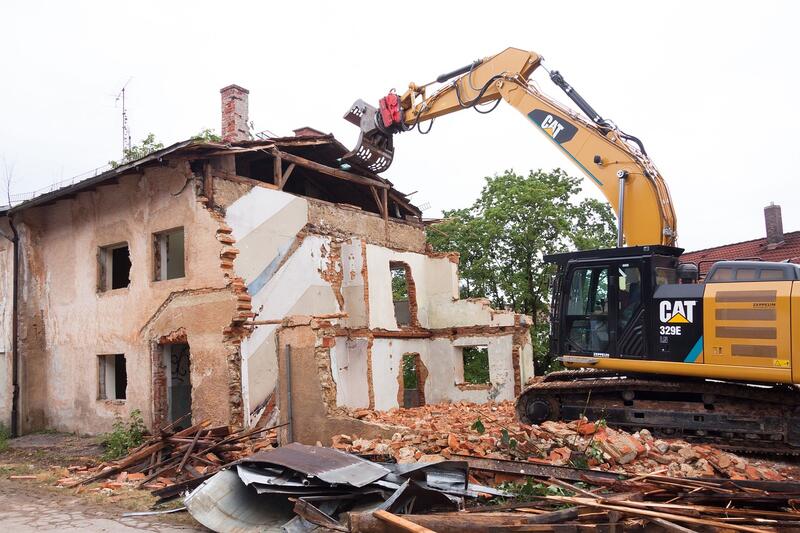Nurturing Sustainability: Approaches to Decarbonize Demolition
This article explores various methods and strategies for reducing carbon emissions in the demolition industry, promoting sustainable practices and environmental stewardship.

The demolition sector plays a crucial role in the construction industry, as it is responsible for the dismantling and removal of old buildings, bridges, and other infrastructure. However, this sector is also a significant contributor to carbon emissions, which is a major concern for the environment. Decarbonisation in the demolition sector is essential to reduce the carbon footprint and mitigate the impact of climate change. This article will explore the concept of decarbonisation in the demolition sector, the sources of carbon emissions, strategies to reduce emissions, challenges, and implications.
What is Decarbonisation in the Demolition Sector and Why is it Important?
Decarbonisation refers to the reduction or elimination of carbon dioxide (CO2) emissions from various sources, including the demolition sector. The demolition sector is responsible for a significant amount of carbon emissions due to the use of heavy machinery, transportation, and waste disposal. Decarbonisation in the demolition sector is crucial to reduce the carbon footprint and mitigate the impact of climate change. The construction industry accounts for about 36% of global energy consumption and 39% of energy-related CO2 emissions. Therefore, decarbonisation in the demolition sector can significantly contribute to reducing carbon emissions and achieving the global climate goals.
Main Sources of Carbon Emissions in the Demolition Sector
The demolition sector is responsible for a significant amount of carbon emissions due to various activities involved in the process. The main sources of carbon emissions in the demolition sector include:
- Energy Consumption: The use of heavy machinery and equipment in the demolition process requires a significant amount of energy, which is mostly derived from fossil fuels. This leads to the emission of carbon dioxide and other greenhouse gases.
- Transportation: The transportation of demolition waste and materials to and from the site requires the use of trucks and other heavy vehicles, which emit carbon dioxide and other pollutants.
- Waste Disposal: The disposal of demolition waste in landfills or incineration facilities releases methane and other greenhouse gases into the atmosphere.
- Material Extraction: The extraction of raw materials for construction and demolition activities requires a significant amount of energy, leading to carbon emissions.
Strategies to Reduce Carbon Emissions in the Demolition Sector
Several strategies can be implemented to reduce carbon emissions in the demolition sector. These include:
- Energy Efficiency: The use of energy-efficient machinery and equipment can significantly reduce energy consumption and carbon emissions. This can be achieved by using electric or hybrid machinery and equipment that runs on renewable energy sources.
- Recycling and Reuse: Recycling and reusing materials from demolished buildings can significantly reduce the need for new materials, which require energy for extraction and production. This can also reduce waste and carbon emissions associated with waste disposal.
- Waste Management: Proper waste management practices, such as sorting and separating waste, can reduce the amount of waste that goes to landfills or incineration facilities, reducing methane and other greenhouse gas emissions.
- Sustainable Transportation: The use of sustainable transportation, such as electric or hybrid vehicles, can significantly reduce carbon emissions associated with transportation.
Challenges Facing Decarbonisation in the Demolition Sector
Several challenges hinder the decarbonisation of the demolition sector. These include:
- Cost: The adoption of new technologies and practices to reduce carbon emissions can be expensive, making it challenging for small businesses to implement.
- Lack of Awareness: Many stakeholders in the demolition sector are not aware of the impact of carbon emissions on the environment and the need to reduce them.
- Regulations: The lack of regulations and incentives to reduce carbon emissions in the demolition sector can hinder the adoption of new technologies and practices.
- Infrastructure: The lack of infrastructure, such as charging stations for electric vehicles, can hinder the adoption of sustainable transportation.
Implications of Decarbonisation for the Demolition Sector
Decarbonisation in the demolition sector has several implications, including:
- New Business Opportunities: The adoption of new technologies and practices to reduce carbon emissions can create new business opportunities in the demolition sector.
- Improved Reputation: Companies that adopt sustainable practices and reduce carbon emissions can improve their reputation and attract more customers.
- Compliance: The adoption of sustainable practices and reduction of carbon emissions can help companies comply with regulations and avoid penalties.
- Reduced Costs: The adoption of energy-efficient machinery and equipment and the reuse of materials can significantly reduce costs associated with energy consumption and waste disposal.
Conclusion
Decarbonisation in the demolition sector is crucial to reduce the carbon footprint and mitigate the impact of climate change. The main sources of carbon emissions in the demolition sector include energy consumption, transportation, waste disposal, and material extraction. Strategies to reduce carbon emissions in the demolition sector include energy efficiency, recycling and reuse, waste management, and sustainable transportation. However, several challenges hinder the decarbonisation of the demolition sector, including cost, lack of awareness, regulations, and infrastructure. The implications of decarbonisation for the demolition sector include new business opportunities, improved reputation, compliance, and reduced costs.